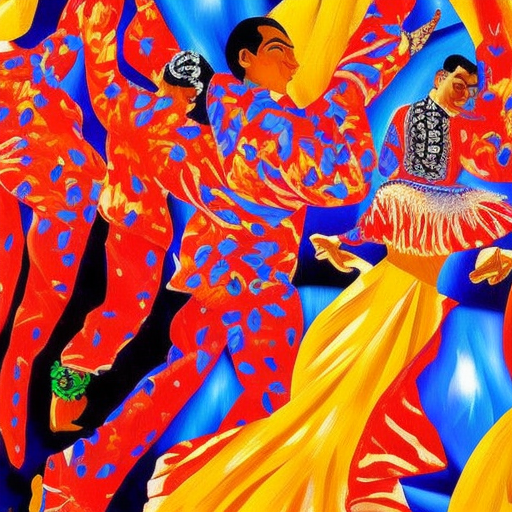Rumba: A Vibrant Dance and Music Genre
Rumba is a lively dance and music genre that originated in Cuba. It is characterized by its energetic rhythms, passionate movements, and vibrant musical accompaniment. Rumba has a rich history and has evolved over time, incorporating various influences from African, Spanish, and Afro-Cuban cultures. Today, it is not only a popular dance style in Cuba but also enjoyed and performed worldwide.
Origins and Influences
Rumba can be traced back to the 19th century, when African slaves brought their music and dance traditions to Cuba. These traditions blended with the music and dance styles of the Spanish colonizers, resulting in the birth of rumba. The African influence is particularly evident in the rhythmic patterns and percussive elements of rumba music.
Styles of Rumba
There are three main styles of rumba: yambú, guaguancó, and columbia. Yambú is the oldest style and is characterized by its slow tempo and sensual movements. It is often danced by older couples and emphasizes the connection between the dancers. Guaguancó is the most popular style of rumba and is known for its flirtatious and playful nature. It involves a male and female dancer engaging in a game of seduction and courtship. Columbia is the most energetic and acrobatic style of rumba, often performed by male dancers. It showcases their strength, agility, and improvisational skills.
Instruments and Musical Elements
Rumba music is typically performed by a small ensemble of musicians, known as a conjunto. The main instruments used in rumba include the clave (a pair of wooden sticks), congas (drums), bongos, maracas, and the tres (a Cuban guitar-like instrument). The clave is particularly important in rumba, as it sets the rhythmic foundation for the music. The syncopated rhythms and call-and-response patterns are also key elements of rumba music.
Popularization and Global Influence
In the early 20th century, rumba gained popularity in Cuba and became an integral part of the country’s cultural identity. It was performed in social gatherings, festivals, and even in theaters. In the 1930s, rumba began to spread beyond Cuba’s borders, particularly to the United States. It gained international recognition and influenced other music genres, such as jazz and salsa.
Rumba’s global influence continued to grow in the mid-20th century, with the rise of Latin music in the United States. Artists like Desi Arnaz and Tito Puente incorporated rumba rhythms into their music, introducing it to a wider audience. Today, rumba is enjoyed and performed by people of all backgrounds, and its influence can be seen in various dance styles and music genres around the world.
Rumba in Popular Culture
Rumba has made appearances in popular culture, particularly in films and television shows. In the 1940s and 1950s, Hollywood produced several musical films that featured rumba, showcasing its vibrant rhythms and dance movements. In recent years, rumba has also been featured in reality TV shows and dance competitions, further increasing its visibility and popularity.
Conclusion
Rumba is a dynamic dance and music genre that originated in Cuba and has gained international recognition. Its lively rhythms, passionate movements, and rich cultural heritage make it a captivating art form. Whether performed in traditional settings or incorporated into contemporary music and dance, rumba continues to captivate audiences worldwide with its infectious energy and vibrant spirit.












